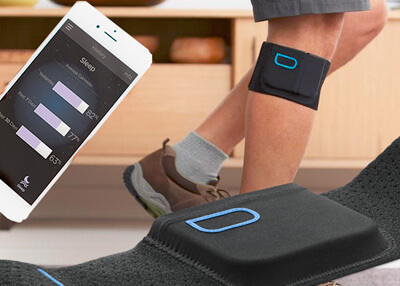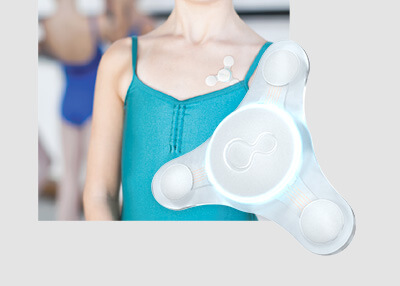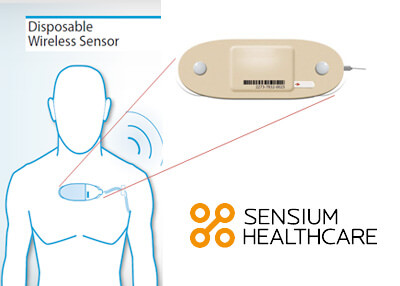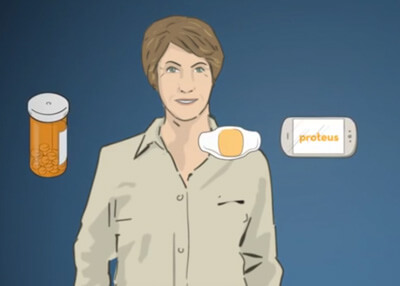The idea of a totally ‘connected’ hospital isn’t a new one – in fact it’s been around pretty much as long as the internet. And it makes sense – the possibilities for automatic patient monitoring and the chances to improve processes based on past data are all extremely attractive. Now, with the emergence of the Internet of Things (IoT) these possibilities are becoming realities.
What is the IoT?
The Internet of Things is essentially the name given to the idea of physical objects being connected to the internet. You may already have an IoT device in your home; if you have installed the Nest thermostat then you have taken the first step towards connected living. Like all IoT devices, the Nest learns your behaviour (in this case when you turn the heating on and off) and uses the data it collects over time to automate the process. Elsewhere in the home, smart fridges can alert you when ingredients are running low and smart lighting can be set to help keep sleep patterns regular. But it is the healthcare industry in which some of the most life-changing applications for IoT are currently emerging.
We’ve found 5 of the most interesting and revolutionary IoT technologies with the potential to change the healthcare landscape.
Quell Relief

At first this seems like an everyday knee brace. Then you learn that at the touch of a button it sends out electronic pulses that trigger pain relief symptoms in the brain. Then you learn that it’s connected to a smartphone app that’s constantly monitoring your recovery, keeping records on everything from your sleep patterns to the frequency of use. This is one smart bit of kit and it’s making a real difference in the lives of people who suffer from chronic pain.
ADAMM

Exactly why this technology is called ADAMM is a mystery we haven’t yet been able to solve. It’s not an acronym, as the other official name is ‘The Intelligent Asthma Management Kit’. No doubt there’s some reason we haven’t yet been clever enough to figure out, because this is one seriously ingenious device. Some asthma sufferers, especially older patients require constant monitoring. Until now, this has been carried out in the form of regular visits to the doctors. But ADAMM could change all that. The wearable device monitors your condition, looking out for when symptoms arise. When they do, it sends a notification to the patient, alerting them to take whatever medicine might be required.
Not only this, but it’s linked up directly to the hospital’s data system, allowing for easy record keeping. It also allows inhaler detection, to remind a patient whether they have taken their inhaler or not, and a voice journaling function that allows the patient to record any change in feelings or symptoms. There’s more too – check it out here:
http://healthcareoriginals.com
Sensium

Patients will barely notice that they are wearing this light patch, but in doing so they are allowing hospital staff to keep an eye on everything from their heart rate and blood pressure to their temperature and respiration rates. The device was trialled recently at the privately owned Montefiore Hospital in Brighton, with patients reporting that it gave greater peace of mind and nurses reporting an ease in workload, as it automatically alerts them if anything unusual occurs with a patient’s symptoms. Could we see this rolled out across the NHS in coming years?
http://www.sensium-healthcare.com/sensiumvitals%C2%AE-system#.V5ipXpOYG9h
Proteus Digital Pill

A digital pill – what? Are we that far into the future already? Well, not quite. This one’s still undergoing clinical trials, but early indications are showing that this ‘digital pill’ can aid with monitoring of patients’ conditions. Once consumed, the pill – which is connected to an app – can help doctors measure everything from how regularly a patient is taking their medicine to how well they are responding to treatment.
https://www.youtube.com/watch?v=-hhOtjdkU34
Oticon Hearing Aid
500 million people worldwide suffer from hearing difficulties, making situations such as group conversations, or listening for detail in crowded spaces extremely difficult. The Oticon hearing aid, developed in Denmark by a company of the same name, can solve these problems. The ground-breaking ‘Brain hearing’ technology has been shown to increase understanding of speech by up to 30%. The possibilities don’t stop here either. With the device being connected in to the Internet of Things, there is the potential for it to this to link up to other vital devices around the home such as smoke alarms, baby monitors – even the doorbell. Oticon are calling this ‘the Internet of Things that matter’, and it’s easy to see why.
[/vc_column_text][/vc_column][/vc_row]
